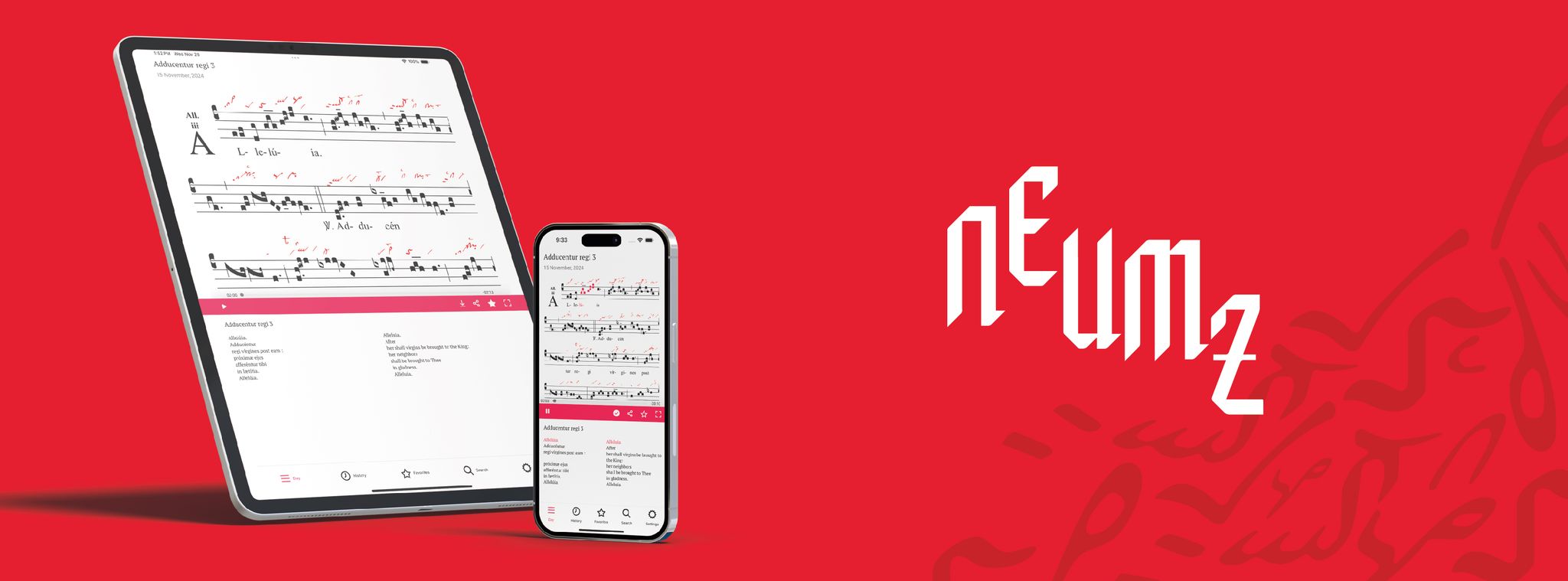Puer Natus Est 7
Tomorrow we celebrate the great solemnity of the Nativity of Jesus. To celebrate it, we at Neumz have chosen the Introit chant, Puer natus est. The text is taken from the book of the prophet Isaiah, 9, verse 6, and consists of three musical phrases that correspond to the prophecy of three crucial moments in the life of Christ: first, his birth and his human-divine form; puer is the child and Filius is the Son of God, the Word; second, his reign, under the symbolic form of the principality he carries on his shoulder, which according to all tradition is the Cross, the instrument of his conquest; third, his supreme triumph, by the name he will be given: Angel of the great counsel. Great counsel is understood here in the sense of God's eternal plan for the world, what St Paul calls the mystery of Christ recapitulating everything in Himself for the glory of the Father. Of this plan of divine mercy, Christ is the herald: Angelus. Angelus: "Angel of the Great Council", "the Great One sent" by God. This "child", this "Son" is and has the great message, the "Angel of the Great Message" who announces to mankind: that God is his "Father", our Father; this is his good news for mankind. It should be noted that this passage seems to be taken from a Latin version prior to the Vulgate, and has many differences with it that bring it closer to the Hebrew text we have today. Perhaps the most significant difference is the attribution to the child of the name "Angel of Great Counsel".
In the liturgical sense, it is not the prophet who speaks, but the Church who sings her joy at the words of prophecy. After having been, for her, the words of trust so often repeated, they arise quite naturally on her lips to celebrate what they foretold. Especially because the prophet, for whom they were a living reality at the time of his vision, wrote them in the present tense. Not a word needs to be changed, all is right; the Child is born, the Son is given. On his shoulders he carries his principality; it is not yet fully formed, it is true, but all that the little child who lies there in the manger in the stable suffers in his flesh is already his loving sacrifice with which he conquers the world and begins to reign. Finally, we can already see the day when he will be given the name of victory, for today the angels have sung that a Saviour has been born to us, in whom the Father finds his glory and the earth finds peace. It celebrates not only the birth of Christ, but also his reign and his supreme triumph.
As for the melody, composed in mode 7, it is of great agility, and only assumes a certain gravity at the end, giving the child the name of magni consilii Angelus. Linked to this agility of the melodic movement are the musical turns which are repeated almost identically (in Puer-et filius; nobis-humerum; ejus-ejus) to which must be added the multiple triplets on the C in the three phrases. The whole piece is structured with very agile movements, either rising or falling within the large musical range of mode 7. But the richest thing about this melody is the prominence of the C, as the axis around which the melodic movement rises or falls, to support and extend itself, highlighting this or that passage.
The first phrase sings of the Child who has just been born: it is pure joy, the immense joy of the Church, and as long as it remains in the depths of our soul, it must be externalised. At the beginning, Puer natus est, joy overflows, it bursts forth, without losing its simplicity; it has all the spontaneity and all the eagerness of the good news that we tell around us. The intonation of the piece, which uses the entire fifth G-D, gives it its distinctive mark and puts the "child" at the heart of the celebration. This same leap of the fifth is repeated identically in the following phrase (et filius). However, if the first clause moved in the acute range, a heavenly child, come from Heaven, the Son who is given to us comes down from Heaven to Earth: see the descending movement in filius and the descending leap that closes this first phrase in nobis.
The second phrase, during imperium, acquires a majestic amplitude, with a very expressive start, reaching the F, the melodic summit of the piece; it is no longer about the Child, but about the King. In humerum ejus, the evocation of his power, his principality that rests on the shoulders of the newborn child again goes beyond the domain of the dominant D: it is a power that comes to him from above. The melodic movement and the cadence at ejus shows that this is not all: this child brings us a message from Heaven, he is the message and the messenger: the title conferred on him is of immense honour. Note the beautiful torculus which makes the accent of vocabitur shine and the solemnity with which the word nomen is treated in a context in which two triplets appear. The great similarity of the melodic turns of ejus, humerum ejus and nomen ejus, establishes this link between his power, his principality, and the name, the title given to him, "Angel of the great council". The beginning of the last clause, magni consilii Angelus, returns to the beginning of the piece but in an inverted manner: from the incipit in which we hear an ascending movement G-D-E-C, we pass to C-E-D-G, in a descending movement, melodically linking that Puer, that child clothed with the power of the heights who descends to us as the Angel of the great council.
